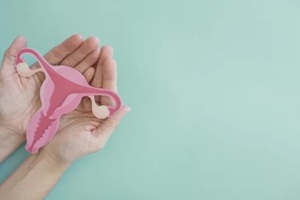 When we talk about breast health, it’s essential to keep in mind that your breasts respond to hormonal rhythms each month. The rise and fall of estrogen and progesterone act as signals. Estrogen stimulates ductal growth, and progesterone supports growth in the milk glands (lobules).
When we talk about breast health, it’s essential to keep in mind that your breasts respond to hormonal rhythms each month. The rise and fall of estrogen and progesterone act as signals. Estrogen stimulates ductal growth, and progesterone supports growth in the milk glands (lobules).
Because of those shifts, breast tissue often becomes slightly heavier, denser, or more sensitive at particular times. In fact, research shows that each breast may change in volume by an average of around 76 mL, about 13.6% of its volume at menses, through the menstrual cycle.
These shifts are usually mild, but they can feel more pronounced in some people, especially if your breasts are naturally denser or more sensitive.
What You Might Feel Through the Cycle
Follicular Phase (Early to Mid-Cycle)
After your period ends and leading up to ovulation, estrogen levels rise. Breast ducts can expand under that influence, but often you won’t feel much difference. Some women note a mild fullness or slight heaviness, but there is usually less tenderness during this phase.
Around Ovulation
Around mid-cycle, there can be a transitional phase. Some women report minor sensitivity or mild odd sensations. Generally, more noticeable changes tend to occur after ovulation.
Luteal Phase (Post-Ovulation to Menstruation)
This is the most commonly symptomatic period. Progesterone levels rise, milk gland tissue may swell, and fluid retention can inflate the overall feeling of fullness or tightness.
Breast tenderness is quite common. In fact, about 68% of premenopausal women report tenderness associated with their cycle. Approximately 70% of women also experience cyclic breast pain at some point in their lives, meaning pain that comes and goes with their cycle.
Menstruation Begins
Once bleeding starts, many of the sensations ease. Swelling, tightness, or lumpiness often recede as hormones shift down.
When Sensations Warrant Extra Attention
Cyclic pain tends to recur. While about 20–30% of women with it see spontaneous resolution, around 60% may experience repeat episodes.
However, there are times when it’s best to check with your provider:
- If pain or changes last well beyond your period (several days after bleeding starts)
- If there’s a distinct, hard lump or area that doesn’t shift or reduce
- If there’s nipple discharge (especially blood-tinged), skin changes, or persistent asymmetry
- If the extent of discomfort interferes with daily life or sleep
Your provider may suggest further evaluation, such as imaging or a clinical breast exam, especially when something feels unusual or doesn’t follow your usual patterns.
Supporting Comfort During the Cycle
While you can’t stop hormone shifts, there are gentle strategies to reduce discomfort:

- Wear a properly supportive bra, especially in the luteal phase.
- Limit salt, caffeine, and high-fat foods if those seem to worsen swelling.
- Apply warm or cool compresses where you feel tenderness.
- Use over-the-counter anti-inflammatory medication or other pain relief as instructed by your provider.
- Some people find relief by tracking their symptoms, such as writing down when pain or swelling peaks, so you and your care team notice patterns together.
It also helps to do breast self-checks at regular intervals. Because your breasts change through your cycle, choosing a time when they’re less tender is helpful, for instance, 3–5 days after your period starts.
Schedule an Appointment
At Raleigh Gynecology & Wellness, we know how stressful it can be to encounter unexpected breast changes. We welcome questions and responses about what feels “normal” for you. No feeling is too small to talk about, especially if something seems different from what you usually experience.
If you notice:
- Worsening or persistent pain
- A distinct new lump or thickened area
- Discharge from the nipple
- Asymmetry or skin changes
…please contact us. We can listen, examine, and when needed, order imaging or, in some cases, refer you to a specialist. Often, we’ll look at how your symptoms compare across cycles and your personal history to decide what’s most appropriate.
Your breasts are sensitive to monthly changes, as that’s a natural part of being a woman. But you don’t have to go through those changes alone. We’re here to support your comfort, clarify what’s typical versus what requires follow-up, and partner with you in caring for your breast health. Reach out to our Raleigh Gynecology & Wellness team today to learn more about our services or schedule an appointment.


 There is no one-size-fits-all approach to intimacy during menopause. Every woman’s experience is different, and solutions often involve a mix of physical, emotional, and relational support. The good news is that many options are available to help women feel more comfortable and confident.
There is no one-size-fits-all approach to intimacy during menopause. Every woman’s experience is different, and solutions often involve a mix of physical, emotional, and relational support. The good news is that many options are available to help women feel more comfortable and confident. Menopause may bring changes to intimacy, but that doesn’t mean the end of closeness, pleasure, or connection. With the proper support, you can continue to enjoy fulfilling relationships and feel confident in your body.
Menopause may bring changes to intimacy, but that doesn’t mean the end of closeness, pleasure, or connection. With the proper support, you can continue to enjoy fulfilling relationships and feel confident in your body.
 Soy products, such as soy milk, tofu, and edamame, have natural compounds that mimic estrogen and may reduce hot flash frequency by
Soy products, such as soy milk, tofu, and edamame, have natural compounds that mimic estrogen and may reduce hot flash frequency by  Managing menopause symptoms is possible with the right nutrition, lifestyle adjustments, and professional guidance. Emphasizing good nutrition and limiting triggers can help support comfort and well-being during this stage in your life.
Managing menopause symptoms is possible with the right nutrition, lifestyle adjustments, and professional guidance. Emphasizing good nutrition and limiting triggers can help support comfort and well-being during this stage in your life. Many women are surprised to find that the
Many women are surprised to find that the  Emotional changes during perimenopause are far more common than many women realize. Depression and irritability are among the most commonly seen
Emotional changes during perimenopause are far more common than many women realize. Depression and irritability are among the most commonly seen  Anxiety and irritability during
Anxiety and irritability during  As women enter
As women enter 